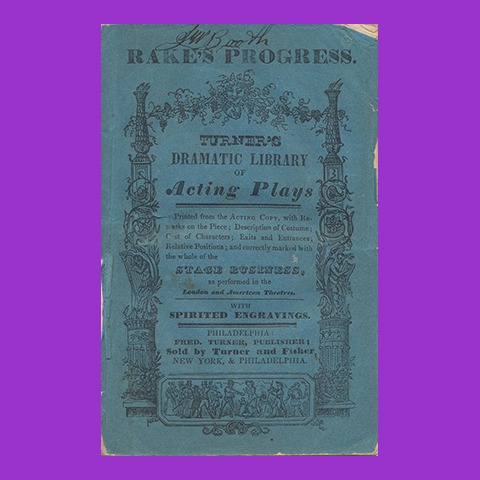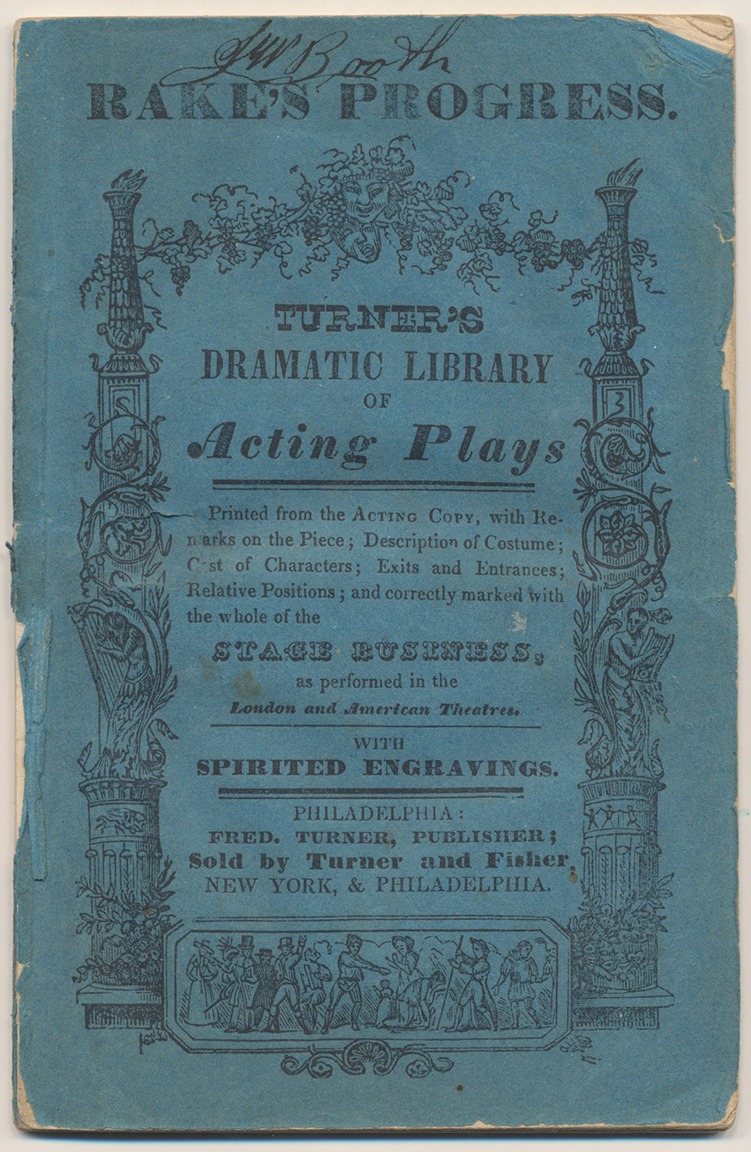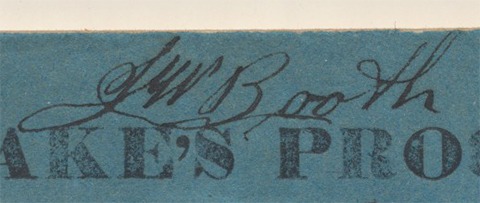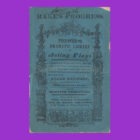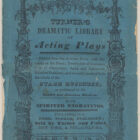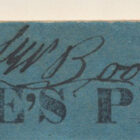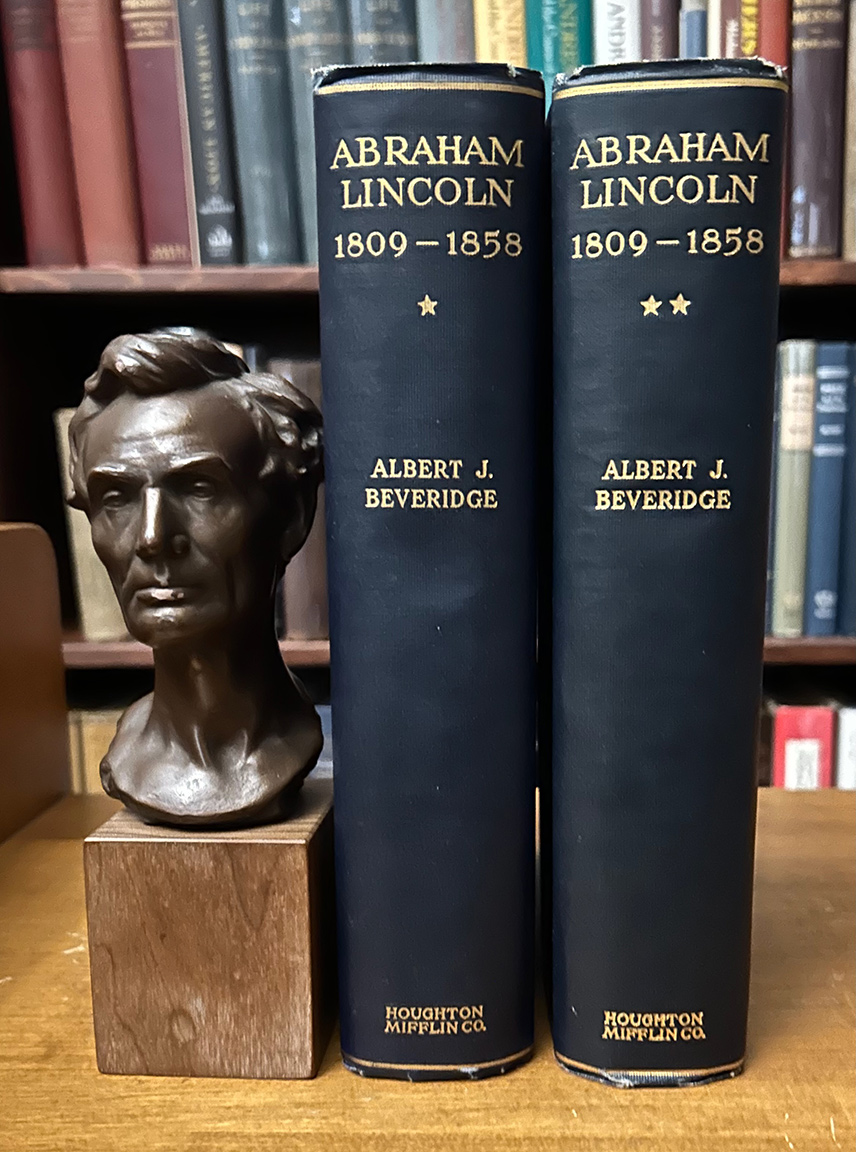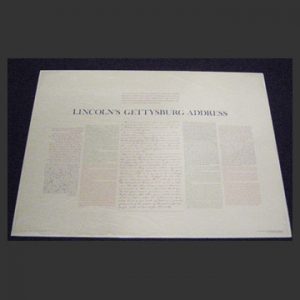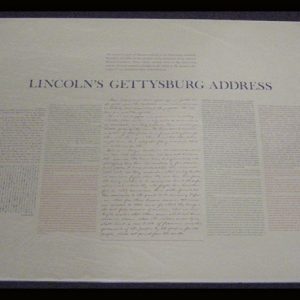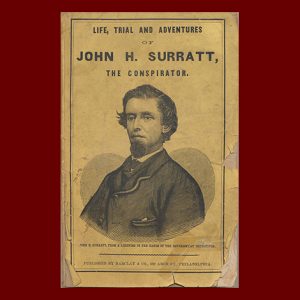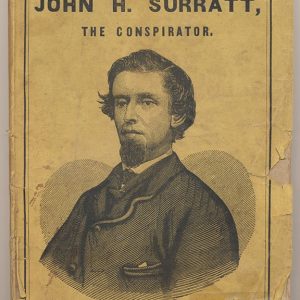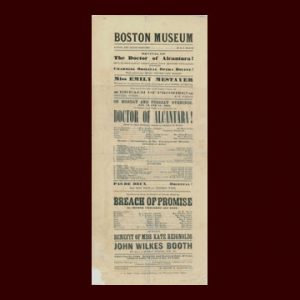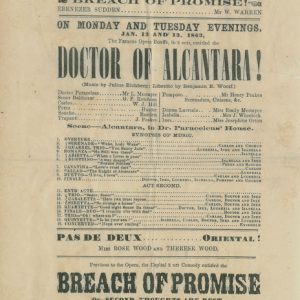John Wilkes Booth, Script for Rake’s Progress, Signed
$28,500.00
Booth Signs a Theatrically Used Script!
Exceptional and Rare to the Marketplace
This product requires special shipping considerations. Shipping and insurance charges are additional.
Questions
Call (312) 944-3085 or email us here.
Reserve ItemDescription
John Wilkes Booth signature on a script for Rake’s Progress.
The play dates from Booth’s apprentice years on the Baltimore and Richmond stages in the late 1850s. Most likely, Booth was an understudy for this play. Actors do not ordinarily share their scripts and his signature on the cover indicates that this was his very own copy.
Though Booth is not listed for one of the parts, “tic marks” next to the character Frederick Florid (“in modern dress”) indicates whom he would play. Florid (“Flo”) was mostly “a musical sketch highly ornamented” in which Booth would be singing many lines. In Act I, there are 23 marked lines, and an additional two with manuscript changes to the line. In Act II, he has changed one line, tic-marked another, but missed indicating his part 20 times (which at one point is sung “without, ” meaning off stage). Booth’s character does not appear in Act III.
“Correctly Printed from the Most Approved Acting Copy…To which are added, Properties and Directions, as performed in the American Theatres.” Included are costume descriptions, entrances and exits, position of performers on stage, “and the whole of the State Business.”
With solid provenance, from the Booth family: Joseph A. Booth (youngest brother of Wilkes) family; Charles Hamilton Autographs, Inc.; John Lattimer, signed and dated on inside cover; ALBS; private collector; ALBS.
Very good; some chipping of spine paper; a few very small chips to bottom edge; lt. bumping of top corner; lt. horizontal wrinkle of pamphlet.
Booth, John Wilkes. ACTOR’S SCRIPT, SIGNED (“J. W. Booth”) on the front wrapper. Rede, William Leman. RAKE’S PROGRESS. A MELO-DRAMA IN THREE ACTS. Philadelphia & New York: Turner & Fisher, (no date, circa late 1850s). 3-3/4″ x 5-3/4″; 59pp.; blue, illustrated wrappers. In a folding Solander case with gilt descriptive label on cover.
You may also like…
-
John H. Surratt, Life, Trial and Extraordinary Adventures of John H. Surratt…, Pamphlet
$1,250.00 -
John Wilkes Booth, Theatrical Broadside
$2,500.00
